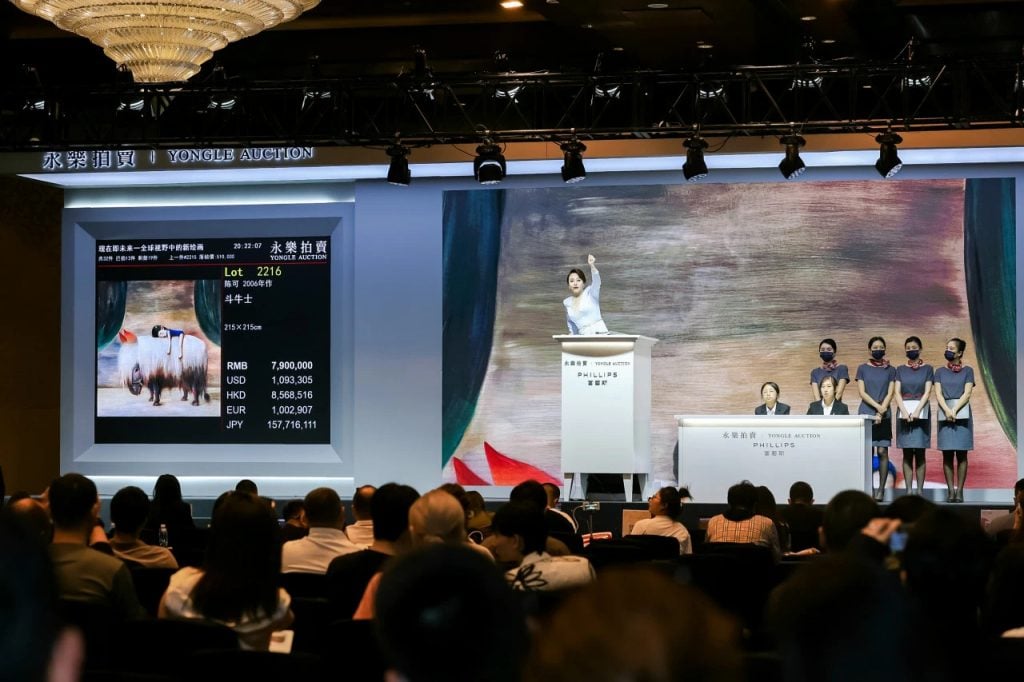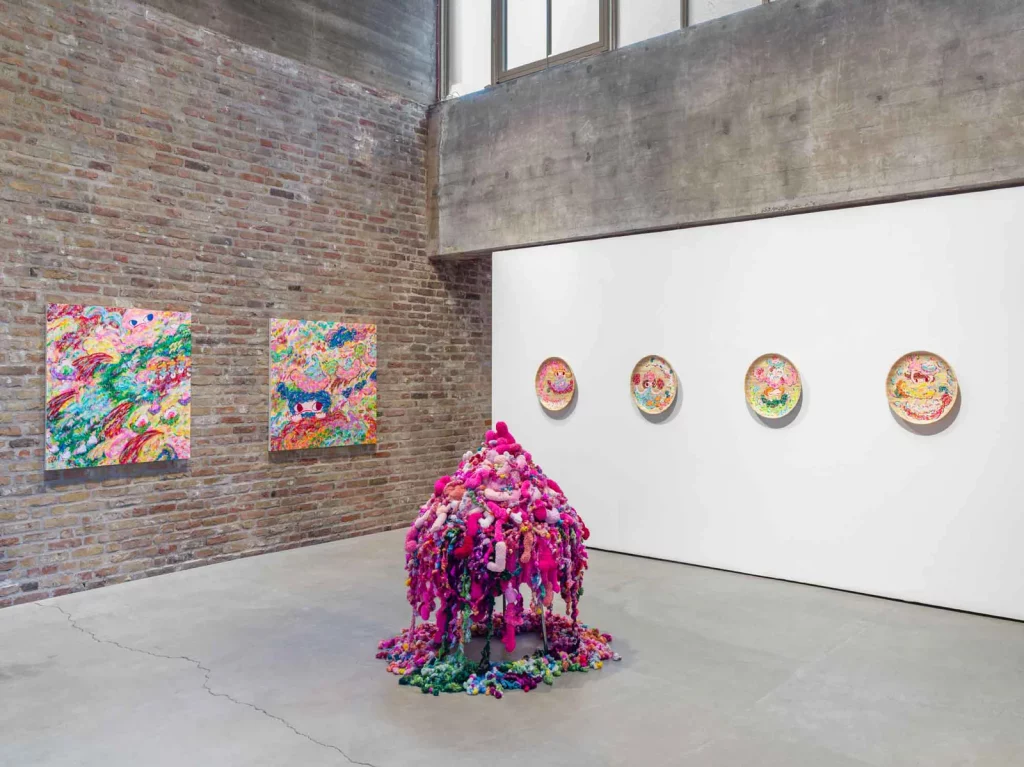Auctions
Who Are the Top-Selling Ultra-Contemporary Asian Artists at Auction?
The Chinese painter Huang Yuxing finished first last year, with $19.8 million in total sales.

The Chinese painter Huang Yuxing finished first last year, with $19.8 million in total sales.

Cathy Fan

This article originally ran in The Asia Pivot, Artnet Pro’s biweekly members-only newsletter providing mission-critical analysis, insights, and exclusive intelligence on developments in Asia’s art markets, with a focus on business opportunities and challenges. Subscribe here to receive it directly to your inbox.
Here at The Asia Pivot, we love to unpack data to offer insights into Asia’s art markets. As the second half of 2024 approaches, let’s home in on a hot-button topic: so-called ultra-contemporary artists (those born after 1974), who are a focus for many collectors.
Here’s a question to get started: Last year, how many women do you think made the lists of the top 100 Asian artists and the top 100 ultra-contemporary Asian artists (the “UC 100”) at auction, as measured by total sales? The Artnet Price Database has answers.
The results for the top 100 Asian artists are shocking. There are only four women, led by Yayoi Kusama (b. 1929). The Japanese superstar ranked eighth in 2023, with 700 lots generating $190 million. You have to be patient as you scroll the list to find the second woman: Ayako Rokkaku (b. 1982), who is also Japanese, came in at 57th (with $12.1 million in total sales, from 195 of 263 works selling). The self-taught artist has won over Asian collectors, especially young ones, with her large, playful figures with candid facial expressions.
The two other women on the top 100 list are the Hungarian-Indian painter Amrita Sher-Gil (1913–41, 80th place, with $7.89 million in sales across 10 lots sold) and Chinese painter Chen Peiqiu (1914–2012, 99th place, $5.92 million in sales, with 110 of her 144 works selling).
Looking at the UC 100 list, the results are more comforting, but only a bit more. Thirty-one women artists appear among the names. The aforementioned Rokkaku ranks number three. Who is ahead of her? Chinese painters in their 40s: Huang Yuxing (b. 1975, first in 2023, with total sales of $19.8 million) and Jia Aili (b. 1979, second in 2023, with $12.41 million in sales). Huang’s market continued to trend upward in 2023, with his work Nine Dragons going for $2.89 million at China Guardian Auctions, his second-highest auction result. (His record, $8.32 million, was set at Christie’s Hong Kong in 2021.

Among ultra-contemporary Asian artists at auction last year, Ayako Rokkaku was the top-placing woman, finishing third. Pictured is her 2021 show at König Galerie in Berlin. Photo courtesy König Galerie.
Chen Ke (b. 1978, fifth in 2023, $5.54 million) also had a good year. Her large-scale painting Matador (2006) fetched $1.25 million at Yongle Auction, tripling its high estimate and resetting the artist’s auction record. In 2016, the same work sold at Poly Auction Macau for $258,395.
Who had the highest average price per lot? Chinese artist Hao Liang (b. 1983), a prolific creator of ink and color works on silk, who had three pieces sell for an average of $1.2 million each. The woman with the highest average was Liang Yuanwei (b. 1977, average $527,224, from seven lots).
China dominated the UC 100 in 2023, which is not entirely surprising, given the size of its population and the depth of its market. The nation of more than 1.4 billion people had 56 artists on the list, including 13 women. Chinese artists also hold nine of the top 10 spots. Japan, with 26 artists, is the runner-up. Four South Korean artists are on the list. Those three East Asian countries account for a whopping 86 of the entries. Meanwhile, Pakistan, India, Thailand, Indonesia, Iran, and the Philippines are among the nations represented by only one artist. There is a supernova among those names, though: Pakistan’s Salman Toor (b.1983, 12th in 2023, with $3.43 million in sales). However, Toor has been working in the art-market epicenter of New York for years.
The strong showing of artists from China, Japan, and Korea reflects the strengths of their economies. It will be interesting to see if the UC 100 list becomes more diverse in the coming years. Lately, major international museums and biennials have been programming shows focused on the Global South, raising the profile of previously marginalized figures, and art scenes are continuing to develop there. The Asia Pivot will be following the action. Stay tuned.